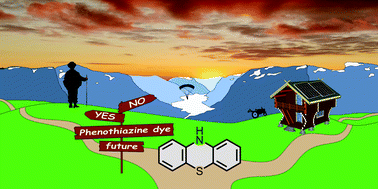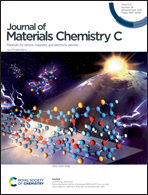Phenothiazine and phenoxazine sensitizers for dye-sensitized solar cells – an investigative review of two complete dye classes†
Abstract
Phenothiazine dyes have attracted significant attention as metal-free sensitizers for dye-sensitized solar cells since their introduction in 2007. Since then, over 430 phenothiazine dyes have been prepared and investigated. Despite the ever-increasing molecular variation, the overall improvement in the power conversion efficiency has been slow. In this review, we identify the traits of successful phenothiazine dyes and shed light on inherent molecular limitations. We include all phenothiazine dyes reported to date, and the big dataset is used to look for trends in photophysical, electrochemical and photovoltaic performance. The dataset used in this study is curated to contain only photovoltaic performance data that is validated using a novel credibility assessment. We compare the distinct sub-geometries of phenothiazine dyes, and investigate the effects of auxiliary donors, the use of π-spacers, DSSC electrolyte compatibility, N-alkyl vs. N-aryl substituents and mono- vs. multianchored vs. tethered dyes. Lastly, the phenothiazine dyes are compared to their closest dye analogue, the phenoxazines. Based on the findings in this review, we believe phenothiazine dyes are unlikely to be the main sensitizers of high-efficiency DSSCs in the future, due to low oxidation potentials, low extinction coefficients and inherent limitations restricting the further optimization of their photophysical properties.



 Please wait while we load your content...
Please wait while we load your content...